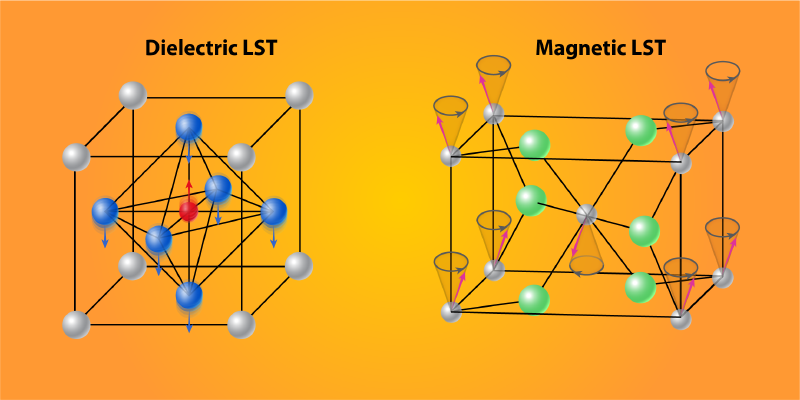A Hidden Connection Between Magnetism and Crystal Oscillations Is Discovered - Magnetic equivalent of the Lyddane-Sachs-Teller relation (Article, Article, Paper)



Scientific discoveries often come from connecting the dots between ideas that seem completely unrelated. A research team at Lund University has done just that. Thanks to their research this group of scientists have uncovered an unexpected link between magnetism and crystalline vibrations, which could drive cutting-edge technology forward by leaps and bounds.
A Magnetic Twist on a Classic Equation
In a study published in Physical Review Letters, the researchers identified a relationship that mirrors the Lyddane-Sachs-Teller (LST) equation, but in the magnetic realm. Originally introduced in 1941, the LST equation explains how materials react to electric fields based on their atomic vibrations.
Now, for the first time, a similar mathematical connection has been found in magnetism, suggesting that the way magnetic fields interact with matter follows patterns strikingly similar to those seen with electric fields. In other words, magnetism and atomic vibrations might be dancing to the same tune, just in different frequencies.
The Lyddane-Sachs-Teller Equation
To fully grasp the impact of this discovery, it helps to first understand the Lyddane-Sachs-Teller (LST) equation. This equation connects the way a material’s crystal lattice vibrates to its electrical behavior, essentially comparing how it responds with and without an electric field. It’s a cornerstone of solid-state physics, and plays a crucial role in fields like optoelectronics and nanotechnology.
In simple terms, the LST equation describes how the balance between a material’s static and high-frequency dielectric permeability is determined by the resonance of its atomic vibrations. This fundamental relationship has paved the way for designing more efficient semiconductors, high-precision sensors, and countless other technological advancements.
Without it, modern electronics might not be as finely tuned. So next time your smartphone works flawlessly, you might just have this equation to thank.
The research team at Lund University has now taken this idea a step further, this time into the world of magnetism. They’ve uncovered a similar mathematical relationship that connects a material’s static magnetic permeability to its magnetic resonance frequencies.
This breakthrough isn’t just an academic curiosity, it lays the groundwork for a whole new direction in the study of magnetic materials. Who knows? It might just spark the next big innovation in everything from data storage to futuristic electronics!
The Magnetic LST Equation: A New Twist on an Old Idea
The notion that a magnetic version of the Lyddane-Sachs-Teller equation might exist wasn’t pulled out of thin air. It traces back to Professor Mathias Schubert, who theorized that materials should react to magnetic fields in much the same way they do to electric fields. The challenge was proving it, since it required ultra-precise experimental technique.
The real breakthrough came with the development of a cutting-edge method known as terahertz electron paramagnetic resonance ellipsometry (THz-EPR-GSE)—a name so long, it almost needs its own equation. This advanced technique allowed researchers to precisely measure how materials respond to magnetic fields across a broad frequency range.
To put their theory to the test, they used this method on an iron-doped gallium nitride semiconductor, then cross-checked their findings with SQUID magnetometry, a technique so sensitive it can detect the tiniest magnetic changes. The result? Solid experimental proof that magnetism and electricity really do follow similar rules—turns out, opposites don’t just attract, they also calculate.
The results were exactly what the team had hoped for —the Lyddane-Sachs-Teller equation holds up in the world of magnetism too. Their data revealed a clear link between magnetic permeability and a material’s resonance frequencies, proving that magnetism plays by the same mathematical rules as its electric counterpart.
This discovery isn’t just a cool physics trick—it has real-world applications in materials science and engineering. For starters, it sheds new light on how magnetism behaves in semiconductor materials. This is the way for smarter, more efficient electronic devices. Imagine this: faster and more effigy-efficient computers, higher performance magnetic storage, with more durability than other present models, ultra-sensitive magnetic sensors that will improve MRI scanners, brain imaging (MEG), and geolocation sensors. Thanks to this discovery, we can look forward to a New Age of cutting-edge technology!